Skincare for your body is like skincare for your face in a lot of ways… but also not, in a lot of other ways!
I think us skincare fans tend to take really good care of our faces, but then we kind of ignore our bodies. Today I’m going to try to balance that with some of the best tips I have for looking after your body skin.
The video (on YouTube here) is partly sponsored by Necessaire – keep scrolling for the text version.
Pick actives for your body just like for your face
There are lots of really good body products on the market these days – here are some of the ones I’ve been really liking lately.
I talked about the Necessaire Body Wash (use LABMUFFIN10 for 10% off Necessaire products) in my 2019 skincare favorites. It’s good for cleansing without stripping, and it has a chic twist top. Since then I’ve also tried some of their leave-on products: Necessaire Body Serum and Necessaire Body Lotion.
These have the sorts of actives you see in face products and are really minimalist. They’re also fragrance-free. While my skin is fine with fragrance, and I personally like having a pleasant scent (especially in body products), a lot of people can’t tolerate it, and it can be hard to find fragrance-free body products.
The textures are also really light, which I love – a lot of body products can be really heavy and sticky, and take ages to sink in. All three have niacinamide (vitamin B3), one of my favorite skincare ingredients that’s really good for sensitive skin, as well as my favorite humectant glycerin. Glycerin is especially great in cleansers for avoiding that tight, itchy, dry feeling you can sometimes get after showers.
The serum has hyaluronic acid, another good humectant moisturiser, which is unusual for a body product. On its own the serum is already really good, but locking in moisture afterwards with the lotion softens my legs within minutes, even when they’re in their saddest dehydrated state.
Another brand I really like for body products is Bioderma. They have some really hydrating and soothing products that incorporate a lot of patented technologies. I’ve raved about the Bioderma Atoderm Shower Oil before which is really lovely in winter, but it’s not available in Australia.
The Bioderma Atoderm Intensive Foaming Gel is more accessible and super hydrating as well. It’s formulated for very sensitive skin, with no fragrance, lots of moisturizing humectants and lipids and the Skin Barrier Therapy patent which protects skin from irritating bacteria. Despite the gentle formula it still foams up, which makes it very easy to distribute over your skin and rinse off (there’s a common misconception that foaming cleansers are always irritating – this definitely isn’t always the case!).
Another brand I love is QV – it’s a bit like the Australian equivalent of CeraVe. They have really large pack sizes with handy pump dispensers, and they’re super budget-friendly. The Intensives with Ceramides range is really gentle and is actually supported by the Eczema Association of Australia. My favourite from this range is the QV Intensive With Ceramides Light Moisturising Cream.
Related post: Ceramides in Skincare: QV Intensive with Ceramides Range
If you’re into hyaluronic acid, The Chemistry Brand Hyaluronic Concentrate should be on your radar. This is one of Deciem CEO Nicola Kilner’s favourite products. It’s basically a giant bottle of goo, with a really fantastic pump that dispenses the product straight down.
Seal in humectants with occlusives and emollients
This goes for your face as well, but I’ve found it more important for body care. Humectant moisturisers really shine when you layer occlusives and emollients in the form of a creamier moisturiser on top. Having that combination of different moisturisers helps hydrate your skin on multiple levels and lock it in.
I’ve also been using Indeed Labs 10Balm Body Lotion over winter. This is a nicely formulated cream that’s very effective at locking in moisture.
Chemical exfoliants also work as deodorants
The Ordinary Glycolic Acid 7% Toning Solution and Pixi Glow Tonic are chemical exfoliants that aren’t specifically made for your body, but they’re in pretty big pack sizes and are reasonably priced. These glycolic acid products also double up really well as deodorants – the low pH changes the ratio of bacteria that live in your armpits, and it’s these bacteria that cause body odour by changing chemicals in your sweat into smelly substances.
Related post: Chemical Exfoliants as Deodorant? The Science of Smelly Armpits
I also have an ancient bottle of Paula’s Choice Clear Back and Body Acne Spray that I’ve been refilling. This spray is really awesome if you get back acne – sprays are great, but this particular spray actually sprays upside down! (I’m sure other brands must also have this, but it’s the only one I know of.)
Other actives for your body
An ingredient that shows up in a lot more body products than face products is oatmeal. It’s the star ingredient in Aveeno products like Aveeno Skin Relief Moisturizing Lotion – the brand is named after avenanthramides, which are very potent anti-inflammatory compounds in oats. It’s the reason why oatmeal baths are really good for itchy body conditions like chickenpox and eczema.
Related post: DIY Skincare – Oatmeal Science
If you want to go really hardcore with actives on your body, there are more intense body products with actives that you’d usually see in face products. I’ve recently tried KGA Body Retinol Regenerating Cream, an Australian product that contains 0.5% bakuchiol, 0.2% retinol and glycolic acid.
You’ll usually you only these sorts of products from clinical brands, and as you’d expect, they come with a clinical brand price tag. With body products though, the price per mL is comparable to face products from more drugstore-type brands.
Use reject face care products on your body
My next tip is to use face care products that didn’t work on your face on your body – products that broke you out, or products that got replaced by better products. It stops the products going to waste, you can use them up faster before they expire, and chances are this will be the most pampering your poor neglected body’s ever gotten!
Body skin is generally more resilient than face skin, since there’s a few extra layers of dead skin cells in your stratum corneum there. Body skin can also react to different things, and products that break out your face might not break out your body. But if you did have a reaction on your face, be careful if you’re using the same product on your body – try to avoid sensitive areas and broken skin.
You don’t need to thoroughly cleanse every body part
Surprisingly, you probably don’t need to cleanse your arms and legs really thoroughly every day. This is official dermatologist advice!
There are some caveats of course:
- You should still be cleansing your smelly bits (groin, armpits) like your groin and your armpits
- If you get back acne you should still be cleansing your back (especially if you use heavy clog-inducing hair conditioners).
- You should be cleansing your skin if it’s visibly dirty (don’t use me as an excuse to stay dirty after Tough Mudder!).
- If you have a job where full body hygiene is really important (like if you work in a P4 lab)
- We should still be washing our hands really thoroughly before touching our faces and preparing/eating food, or if there’s a risk of transferring pathogens
But for most of us, most of the time, we shouldn’t be scrubbing our arms and legs until they’re squeaky clean – you’ll probably end up doing more harm than good when it comes to irritation and disturbing your skin barrier.
Long hot showers are bad
Along the same lines, you shouldn’t be showering for too long with too hot water. I know it’s really nice to have a hot shower sometimes (and I still do it), but it’s not great for your skin – lots of hot water flowing over your skin washes away your skin’s natural moisturising factor (NMF), the natural humectants in your skin. This is actually one of the big causes of upper back itch in winter.
Exfoliating your body
You can exfoliate your body very much like how you exfoliate your face. This involves taking the same precautions when you’re exfoliating. Body skin is a bit tougher it’s a bit thicker than face skin, with a few extra layers of dead skin cells. This means it’s a bit harder to overexfoliate your body, but it can still happen!
The thicker skin also means that your body is more prone to ingrown hairs and keratosis pilaris (chicken skin), which is when dead skin cells block off the hair follicle. To deal with these issues, exfoliation and moisturising are key (dry skin doesn’t exfoliate itself as well).
As well as the chemical exfoliants mentioned earlier (glycolic acid etc.), there’s also urea. Urea shows up in some face products but it’s a lot more common in body products. It’s a really effective exfoliant and humectant moisturiser, and it’s one of the few things that will effectively fix rough cracked hands and heels.
Physical exfoliants also work great on your body. My favourite body scrub is Soap & Glory Smoothie Star Breakfast Scrub, which smells like maple syrup. You can also make a really effective and budget-friendly scrub by mixing a bit of sugar or salt with oil.
Exfoliating tools are also a great option for body care. There are body mitts like Face Halo Body, which you can use wet (gentler, for all over exfoliation) or dry (more efficient, for rough thickened skin).
Exfoliating towels are common in Asia, with good options from Daiso and Innisfree, and the incredibly popular Italy Towel. These are fantastic for scrubbing your back (important for me with my hair conditioner).
Clean and dry your tools properly
With skincare tools, it’s very important to let them dry out properly. When these are damp and covered in skincare products and dead skin, it’s the perfect breeding ground for bacteria and mould.
After each use, rinse them properly and let them dry thoroughly (you may need to take them out of the bathroom to dry). Otherwise you’re running the risk of scrubbing the microbes into your skin which can lead to infections. There are many reports in medical journals of shower tool-induced infections, some of which can be very serious, e.g.:
- Bottone EJ, Perez AA 2nd, Pseudomonas aeruginosa folliculitis acquired through use of a contaminated loofah sponge: an unrecognized potential public health problem, J Clin Microbiol. 1993, 31, 480-483. DOI: 10.1128/JCM.31.3.480-483.1993
- Kitamura M, Kawai S, Horio T, Pseudomonas aeruginosa folliculitis: a sporadic case from use of a contaminated sponge, Br J Dermatol. 1998, 139, 359-360.
- Bottone EJ, Perez AA 2nd, Oeser JL, Loofah sponges as reservoirs and vehicles in the transmission of potentially pathogenic bacterial species to human skin, J Clin Microbiol. 1994, 32, 469-472. DOI: 10.1128/JCM.32.2.469-472.1994
- Corazza M, Carla E, Rossi MR, Pedna MF, Virgili A, Face and body sponges: beauty aids or potential microbiological reservoir? Eur J Dermatol. 2003, 13, 571-573.
- Teraki Y, Nakamura K, Rubbing skin with nylon towels as a major cause of pseudomonas folliculitis in a Japanese population, J Dermatol. 2015, 42, 81-83. DOI: 10.1111/1346-8138.12712
- Maniatis AN, Karkavitsas C, Maniatis NA, Tsiftsakis E, Genimata V, Legakis NJ, Pseudomonas aeruginosa folliculitis due to non-O:11 serogroups: acquisition through use of contaminated synthetic sponges, Clin Infect Dis. 1995, 21, 437-439. DOI: 10.1093/clinids/21.2.437
This is one of the reasons I switched from a sponge on a stick to a body towel – you can scrunch up the towel and use it like a sponge, then open it up for easier rinsing and drying.
Dark armpits and knees are normal
This is something I get asked about a lot! Dark armpits and knees are normal for most people worldwide. You aren’t necessarily meant to be the same colour all over. There’s more skin where it’s folded (knees, armpits, elbows), and more skin means more melanin, which creates a darker patch.
If you have rough, hardened skin or dry scaly patches, exfoliating and moisturising can help with that and yes, your skin might end up a bit lighter. But if you’re a person of colour and your skin’s in a healthy condition, then it’s normal to have fluctuations in colour.
There are a few conditions where pigmented areas aren’t normal and reflect an underlying health issue – if that’s the case, you should get it checked out by a medical professional. But otherwise, this is an old Eurocentric beauty standard that should really die out.
(If you google dark armpits, dark knees, dark elbows etc., a lot of scary health conditions tend to come up – that’s just a reflection of how the medical system doesn’t have quite enough info on skin of colour.)
Apply body moisturisers when your skin is still damp
Apply moisturiser right after you step out of the shower. When your skin is wet it’s most vulnerable to drying out, so you want to get moisturiser on there as quickly as you can. It’s also better for sealing in more moisture, and so that humectants in the product can grab onto the extra water.
Track your moles
It’s also a good idea to track your moles, especially if you have lighter skin or if you get a lot of sun exposure.
There’s a really good acronym for spotting suspicious moles, ABCDE:
- Asymmetric
- Border (fuzzy)
- Colour (uneven)
- Diameter (larger than a pencil eraser)
- Evolving (changing in appearance)
If you have a mole with any of these features, you should get it checked out by a doctor. In Australia, it’s recommended that you have an annual all-over body mole check (usually your GP can do this).
There are apps that can help you track moles. While these can be really useful, they aren’t entirely foolproof – it’s still pretty new technology, and doesn’t necessarily work for all sorts of cancerous moles or all skin types.
Check the UV Index to see if you need sun protection
Of course, we also need to talk about sun protection. This is especially important if you’re exfoliating with alpha hydroxy acids (which can make your skin more sensitive to the sun). Sun protection should also be a priority if you’re using really expensive anti-aging actives, since it’s a massive waste of money if you’re not protecting your skin from further damage.
Check the UV index in your area to see how much of a priority sun protection is, since UV levels change with location, time of day and time of year.
Related post: Should You Wear Sunscreen Indoors? The Science(with video)
Clothes are also a good option for protecting body skin. UPF clothing allows you to accurately know how much protection you’re getting, but other clothing can protect from UV as well.
Related post: How to Choose UV Protective Clothing
Apply enough sunscreen
Just like for your face, if you’re using sunscreen, make sure you use enough. The recommendation is one teaspoon for each of these:
- front of torso
- back of your torso
- each limb
- face, ears and neck
What are your best body care tips?
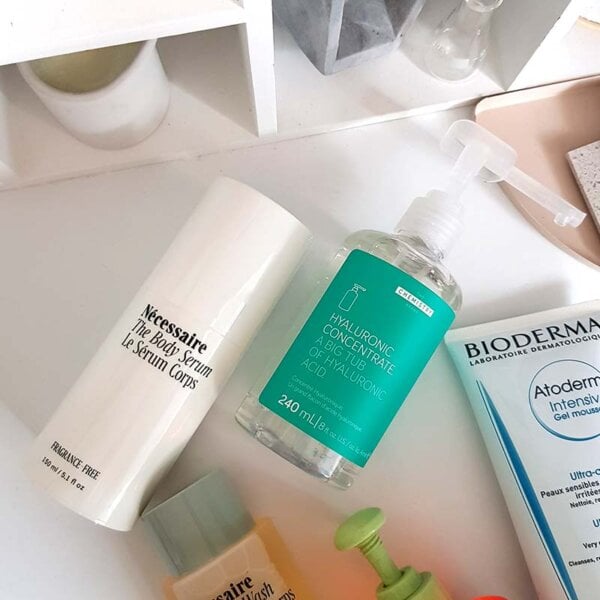
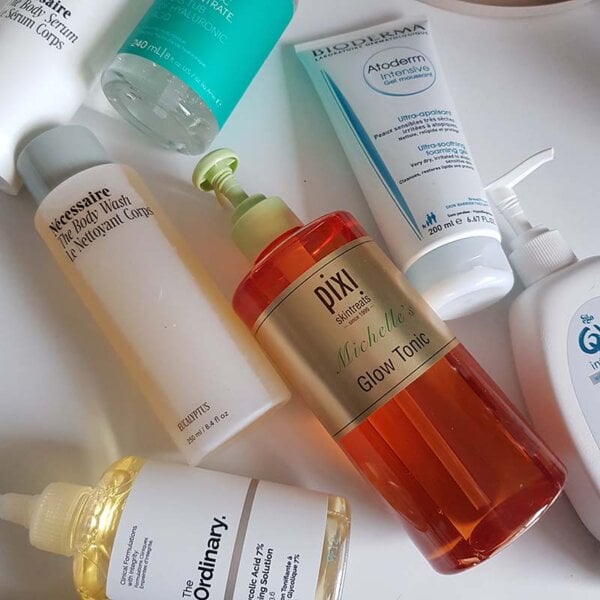
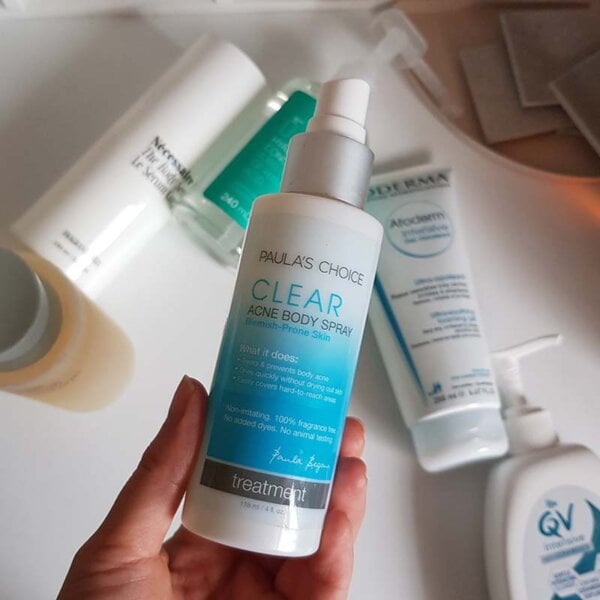
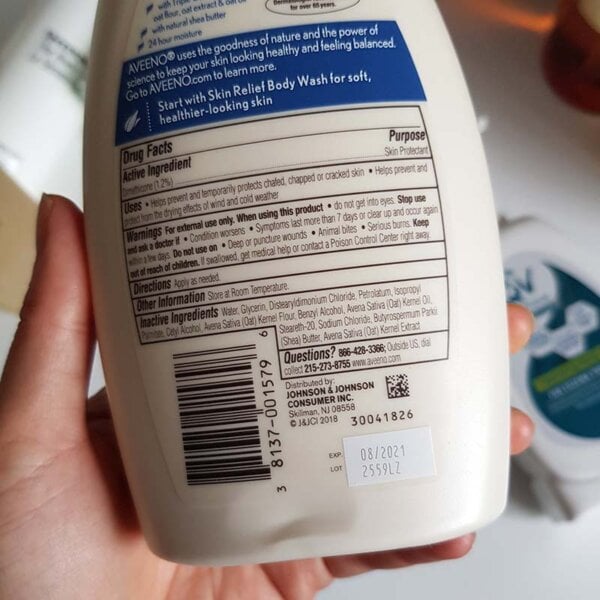
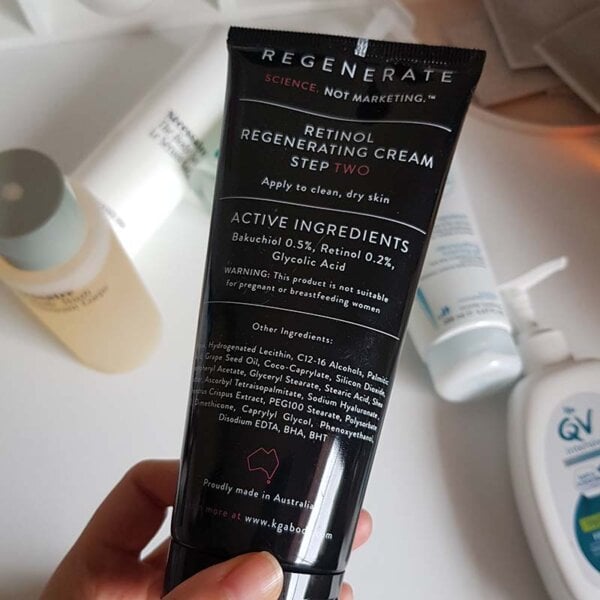

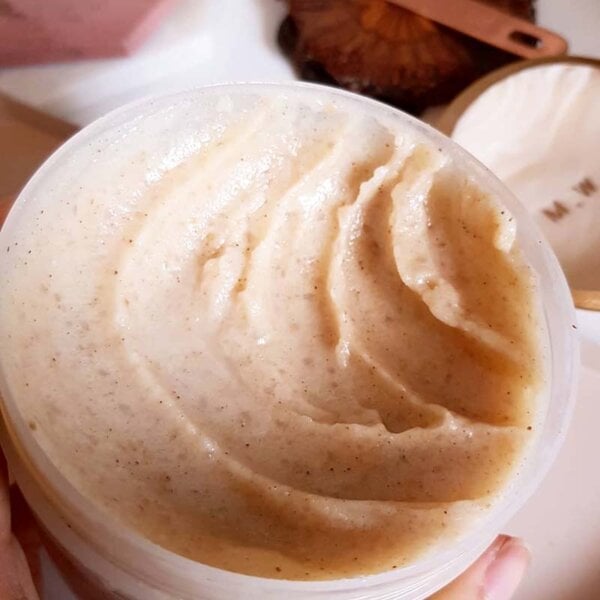
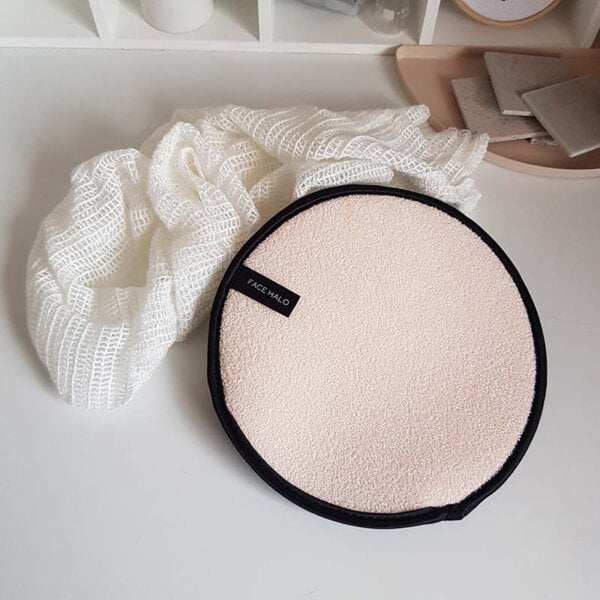





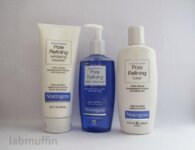
Dear Michelle. Thank you so much for such a detailed thorough (as usual with you) article on the topic. I have a querie re. using TO Glycolic in body care.
1. As an exfoient – how often would you advise to use it and in which manner? With a cotton pad on towel dried skin?
2. As a deodorant – how to avoid irritation on a shaved armpit skin?
Thanks again.
Hi Michelle! Love your beauty science blog!! What should I do if I have tried The Ordinary’s Glycolic Acid toner and Paula’s Choice 2.5% Benzoyl Peroxide treatments as deoderant and have gotten rashes from both?
Thanks!
Amanda in Adelaide
Did you say urea is an exfoliant? I use it as a moisturiser on my legs, knees and below, my rump, and hands and arms up to elbows. I usually buy a lotion or creme 10% and upwards and my skin is verrrrrrry soft. I believe urea helps your skin retain moisture and well as put it back in, and it’s cheap
It’s an exfoliant, and a humectant moisturiser.
I never knew dat 🙂 thanks
Love reading your FACTUAL blogs Michelle! I have extremely dry skin and have used a Dermalogica Ultra Buffing Cloth for years. It’s fantastic to use in the shower for body exfoliation and is great for scrubbing the back. It dries quickly and is easy to wash. Can you recommend a way to apply moisturiser to your back? Try as I might, I just can’t reach all of it.
Also, have you ever tried Lanate Cream?
I don’t really moisturise my back, but when I used to use fake tan I’d stand facing a wall, put my elbow on the wall and push towards it to get my arm further back – be really careful though, that could be a quick way to a dislocation!
How You Should Shower (WITH VIDEO) is … A really weird title 😂😂😂
Ahahaha didn’t even realise! Maybe I’m tapping into a new market…
This is such a timely post. I also use The Ordinary Glycolic Acid on the body — it exfoliates the underarm area quite well. In Asia dark underarms are anathema, especially in the Philippines… there are so many ads/products just for dark underarms. I think it has to do with the fact that we wear sleeveless clothes a lot because of the humid weather, and probably because it’s considered unhygienic to have dark underarms. However, dark underarms can mean a lot of things, ranging from benign to serious– dead skin, endocrine disorders, cancer…pregnancy is a common cause!
A lot of K-beauty brands have focused on body skincare as well– Illiyoon for example has big sizes of their products (Ceramide Ato Lotion/Cream). Aromatica also has a lot of body skincare (like their giant bottle of aloe vera gel). Really thorough post and I think body skin care will be the next big trend. Thank you so much!
Do you have any recommendations for light body moisturizers that don’t contain mineral oil for hot Australian summers?
Ive very dry eczema prone legs, so I always use the “super dry&itch relief” massive pump bottles from what I call the “boring packaging”section of the chemist. Like the Aveeno and the QV ones. But during summer the mineral oil containing ones (and that’s all of them) just turns into a sticky sweaty mess (and sweating triggers my eczema ironically), but I can’t really skip it either (also results in eczema)😒
Have you considered using it in the shower and rinsing it off, or getting a shower oil instead? That works well for me – moisturises, but the excess goes down the drain.
Nice post. Thanks for sharing this amazing article.
Hello! Do you have any recommendations for body sunscreens that apply like a non-greasy lotion? My favorite face sunscreen is the canmake mermaid skin gel and I am looking for something similar or less greasy for hands and forearms. I have a hard time finding body ones that go on smooth and are comfortable to wear in the lab or office that also don’t have the strong beach smell. I would appreciate any recommendations or directions to previous blog posts and videos! Thank you!
Have you tried the current Aveeno Moisturizing Facial Cleansing Bar? I’ve used the old version in the past, but I haven’t tried the new formulation. My skin loves oatmeal.
Full body skin care demands a lot of time. But I really love to do.